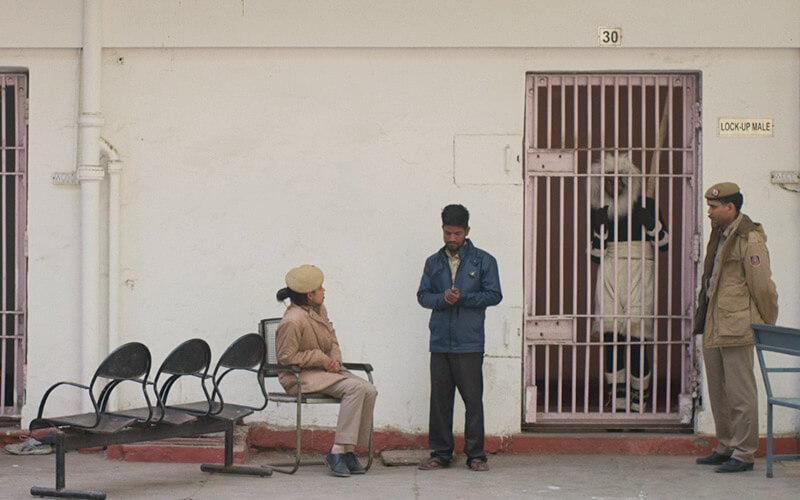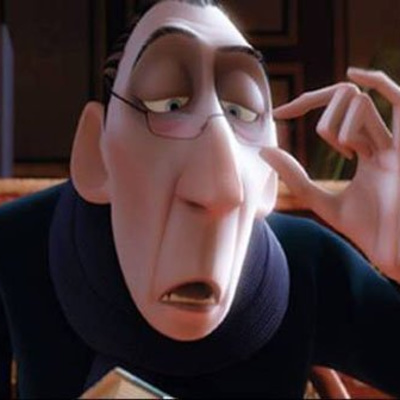By Jayjit Sarkar
The socio-political satire Eeb Allay Ooo! (2019), directed by Prateek Vats and written by Shubham, is more about darkness of the heart than of the heart of darkness, the darkness and the primitivity which lies at the heart of picturesque Lutyens’ Delhi, the seat of insane power. The world of “eeb”, “allay”, and “ooo”, the three animal sounds which stands for langur (baboon), aadmi (human) and bandar (monkey) respectively, is not the peripheral world of the lawless Dantewada or Bastar but the very “centre” of this democratic republic. As we find the protagonist running from one bhavan (administrative building) to another tying to shoo away the monkeys without any success, or his brother-in-law miserably trying to manage the new firearm at his job, or his sister constantly negotiating between her pregnancy and running a small business, we get a glimpse of the plight of the migrant workers trying their luck, doing odd jobs, getting abused and somehow sustaining themselves in the dark and dirty squalors at the edge of a fast growing metropolitan city.
In Anjani and his family, we find a glimpse of the Kim family of Bong Joon-ho’s Parasite (2019), another recent masterpiece in humour noir (“black humour”). The precarious condition of the migrant workers in a modern capital-driven metropolitan set up has been a universal phenomenon since the days of Bimal Roy’s Do Bigha Zamin (1953). The images in the film are so stark and the characters so real that we could “almost” see Anjani and his family walking helplessly with whatever they could collect towards their village in the lockdown on our television screens.
The trinity of eeb-allay-ooo gets complicated when one, the ooo, the monkey, is deified and is glorified to the level of a god-like stature institutionally. One can neither live with them nor kill them. A voice in the film hints at this peculiar predicament and says “Because they are treated as gods. They are given food, they are corrupted, they are made to think that they don’t need to forage anymore. So, they become bold. They start entering, they start demanding. Then the gods become pests.” This is where our protagonist Anjani, interestingly named after the mother of Hanuman, comes in direct contact with the animal-divine. Being a sarkari but contractual servant, his job depends upon how well he can drive away the monkey-gods from some of the very significant sectors of the Lutyens’ Delhi. The reputation of the country is at stake here, he is told. But the ease and efficiency with which his friend and colleague Mahender can imitate the voice of the langurs (“eeb allay ooo!”), Anjani cannot. In his effort to drive away the menace and save his hard earned job, we find Anjani becoming a langur himself in media res, both literally and metaphorically.
Masquerading as a giant langur, he starts shooing away the monkeys and, in the process of doing this, develops a giant langur as his alter-ego. In his constant dealing with the animals, eventually he becomes one. In the great abyss of the power and wealth, a migrant worker is no more than an urban animal, an “inside-outsider”, debilitated, forgotten, and shoo-ed away by the majority of people. In the heart of the republic, Anjani, and many others like him, witness less love and respect than the animals. A country where hyper religious nationalism is in surge, the life of a “holy” animal becomes more valuable than an animal-like human. With its dangerous mixture of humour and cynicism, the film plays with the irony of humans becoming animals on the one hand, and animals becoming more than human, on the other. Initially, the scene where Anjani becomes a laughing stock as he is mischievously locked inside the cage meant for the monkeys and later in the scene where Anjani finds out that Mahender has been mob lynched in the heart of the city, are some of the instances by which the writer tries to convey the subterranean presence of animality and primitivity looming large underneath the narrative of civilization.
Like in Parasite and Todd Phillips’ Joker, the filmmakers of Eeb Allay Ooo! conclude with a crescendo, a frenzy-like resurrection of the proletariat in the form of violence and anarchy against the status quo of the system. In the open-ended final scene, we find Anjani joining a procession, probably of Dusshera, with other fellow “monkeys” and eventually surrendering to the madness, both within and without. We see the making of a diabolical Joker amidst the hustle and bustle of a Gotham-like city.
[The author is an Assistant Professor of English literature at Raiganj University, and a published author]






Leave A Comment
You must be logged in to post a comment.